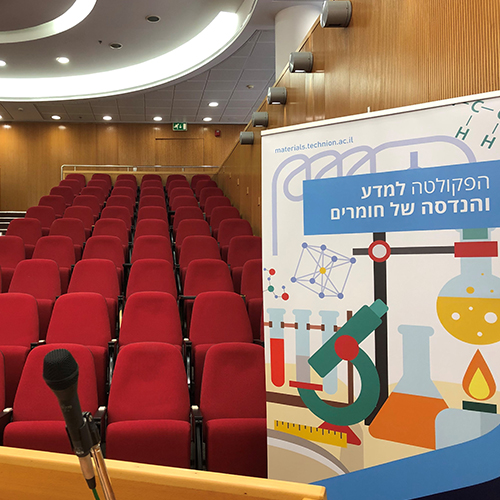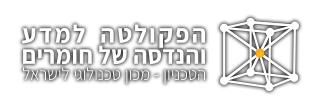
Dr. Arad Lang
27/02/2025
אודיטוריום ע"ש דויד וואנג, בניין מידן, קומה 3
14:30
Two-dimensional hybrid organic-inorganic perovskites (2D-HOIPs) are a promising class of materials for optoelectronic applications. They all share the formula (RNH₃)₂BX₄, where R is a bulky organic group, B is a divalent metal (commonly Pb²⁺), and X is a halide. The inorganic ions form layers of corner-sharing [BX₆]⁴⁻ octahedra, separated by organic bilayers. Weak interactions between these layers lead to melting at relatively low temperatures, before decomposition, enabling solvent-free fabrication that may improve device performance.
By engineering the HOIP composition, crystallization can be suppressed upon cooling from a melt, resulting in the formation of a glassy phase. These HOIP glasses belong to the family of hybrid glasses, distinct from traditional inorganic, organic, and metallic ones. The most studied glass-forming HOIP is (S-NEA)₂PbBr₄ (S-NEA = (S)-(-)-1-(1-Naphthyl)ethylamine). However, its glass is thermally unstable, reverting to its crystalline form with mild heating or over time at room temperature.
In this talk, we will explore the structural changes in (S-NEA)₂PbBr₄ that occur during glass formation using X-ray diffraction and total scattering, showing the loss of short-range order. We will also address the thermal instability through melt alloying (liquid phase blending). We will demonstrate the applicability of melt alloying for 2D-HOIP systems and use thermal analysis and UV-Vis spectroscopy to highlight significant alterations in both the transition temperatures and optical properties of the resulting blends compared to the pure 2D-HOIPs.


